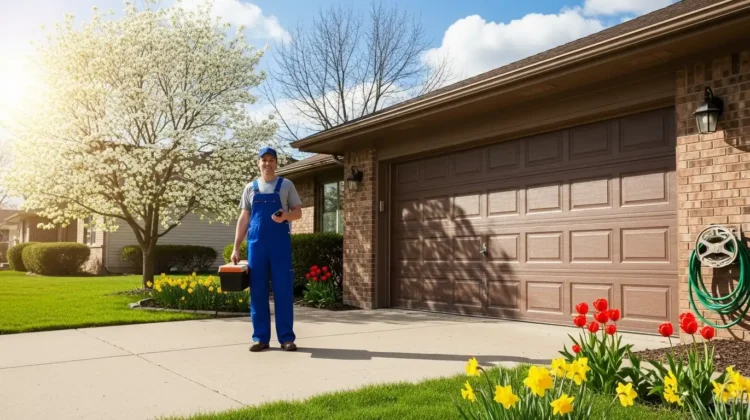
Your garage door is one of the hardest-working systems in your home, opening and closing hundreds of times each year. Yet, many homeowners overlook seasonal garage door maintenance that can keep their doors running safely and efficiently. Adopting a year-round routine helps prevent breakdowns, improves energy efficiency, and extends the life of your system. In this guide, we’ll explore how to care for your garage door through every season.
Why Seasonal Garage Door Maintenance Matters
Unlike many other parts of your home, garage doors are exposed to constant movement, weather changes, and outdoor elements. Seasonal shifts in temperature and humidity can cause metal to expand, wood to warp, or seals to dry out. Without proper seasonal garage door maintenance, these issues may lead to costly repairs—or worse, sudden failures that create safety hazards. For an overview of why inspections matter, see our post on regular garage door inspections.
Spring: Clearing Out Winter Damage
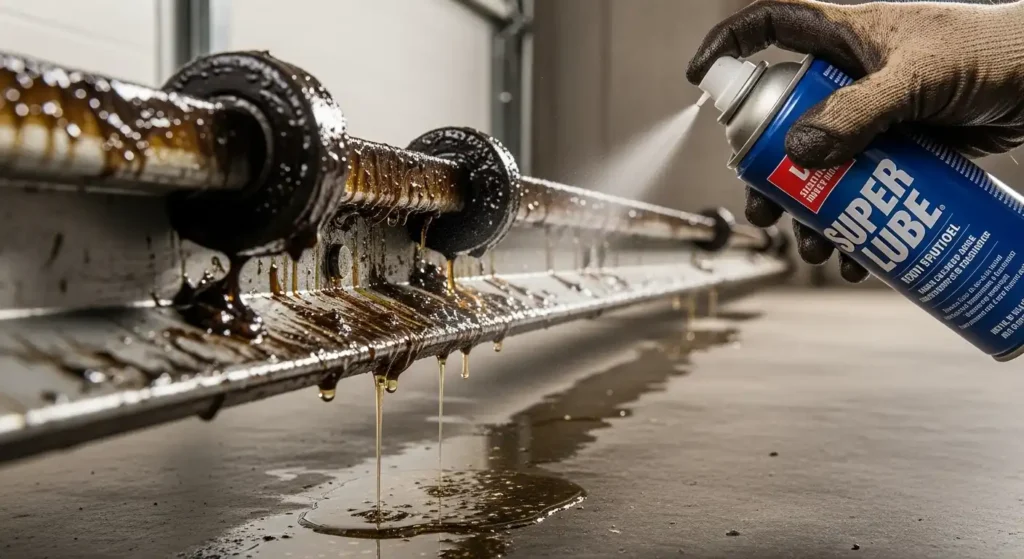
Spring is the ideal time to reset your garage door system after months of cold and moisture. Here are the key steps:
- Clean tracks and rollers: Salt, sand, and grime can build up during winter. Wipe tracks with a damp cloth and inspect rollers for cracks.
- Check weatherstripping: Cold air may have hardened or cracked the seals. Replace damaged strips to keep pests and drafts out.
- Test the balance: Disconnect the opener and lift the door halfway. If it doesn’t stay in place, springs may need adjustment.
- Lubricate moving parts: Apply a silicone-based lubricant to hinges, springs, and rollers to reduce friction.
- Wash door panels: Spring pollen and winter grime can discolor panels. A simple soap-and-water wash helps preserve finishes.
Spring is also an opportunity to prepare your home for storm season. Inspecting panels and seals now will prevent leaks during heavy spring rains. For more seasonal safety advice, visit our garage door safety tips guide.
Summer: Heat and Humidity Challenges
High temperatures and humidity can cause garage doors to warp or expand, especially wooden models. To protect your door during summer:
- Inspect paint or finish: Direct sunlight can fade or crack the finish. Apply a protective coat to wooden doors as needed.
- Check sensors: Dust and pollen often build up during summer. Wipe down photo-eye sensors for reliable safety performance.
- Ventilation: A poorly ventilated garage can trap heat, raising energy costs. Consider adding vents or an insulated door.
- Monitor opener performance: Overheating motors may struggle in extreme heat. If your opener stalls, allow it to cool and consider an upgrade if issues persist.
- Inspect cables: Heat and humidity can weaken steel cables over time. Frayed or rusted cables need replacement.
Many homeowners also store lawn equipment, paints, and chemicals in their garage during summer. Excessive heat can make this area unsafe. An insulated door combined with proper weather sealing can help regulate indoor temperatures. Learn more in our guide to garage door weather sealing.
Fall: Preparing for Cold Weather
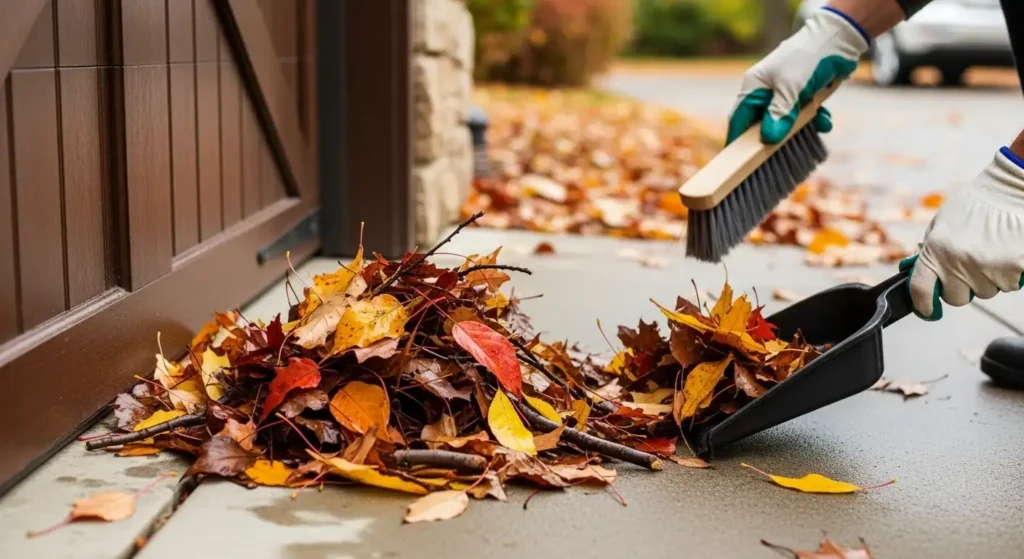
As leaves fall and temperatures drop, your garage door faces new challenges. Fall is the time to prepare for winter’s impact:
- Clear debris: Leaves and twigs can clog tracks or jam sensors. Keep the garage entrance clear.
- Seal gaps: Check bottom seals and side weatherstripping to prevent cold air infiltration.
- Check the opener battery: Many openers include a backup battery. Test it before winter storms arrive.
- Inspect cables and springs: Cold weather can make metal brittle. Replace any frayed or worn parts now.
- Upgrade insulation: Adding a layer of insulation to your garage door panels helps keep your garage and home warmer.
Pro Tip:
Fall is the best time to consider upgrading to an insulated garage door, which helps keep your home warmer and reduces energy bills.
Winter: Battling Cold and Ice
Winter weather is often the harshest on garage door systems. Snow, ice, and freezing temperatures can cause doors to stick or strain. Keep your system running smoothly with these steps:
- De-ice carefully: Never use sharp tools to chip ice from the bottom seal. Instead, use a de-icing solution or hot water followed by a towel dry.
- Lubricate frequently: Cold temperatures can thicken lubricants. Use a low-temperature formula designed for winter use.
- Test safety features: Ensure the auto-reverse system works properly in icy conditions.
- Watch for condensation: Excess moisture may freeze on tracks, causing misalignment. Wipe down metal parts when condensation appears.
- Keep the area clear: Remove snow build-up near the bottom seal to avoid strain on the opener.
Garage Door Insulation and Energy Savings
Seasonal maintenance isn’t just about safety—it also affects energy efficiency. Poorly insulated garage doors allow heat to escape in the winter and cool air to leak in the summer. By maintaining weatherstripping and upgrading to insulated doors, homeowners can cut energy costs. According to the U.S. Department of Energy, proper insulation throughout the home, including garages, can significantly reduce heating and cooling expenses.
DIY vs. Professional Seasonal Garage Door Maintenance
Many seasonal tasks, like cleaning tracks or lubricating rollers, are simple DIY projects. However, other repairs should always be left to professionals. Understanding what falls under seasonal garage door maintenance and what requires expert service ensures your door stays safe and reliable year-round.
- DIY friendly: Cleaning panels, tightening hardware, replacing weatherstripping, and lubricating hinges.
- Professional only: Replacing torsion springs, repairing cables, or adjusting track alignment.
Springs and cables are under high tension and can cause severe injuries if mishandled. The U.S. Consumer Product Safety Commission advises homeowners to leave these tasks to trained technicians.
Common Mistakes in Seasonal Garage Door Care
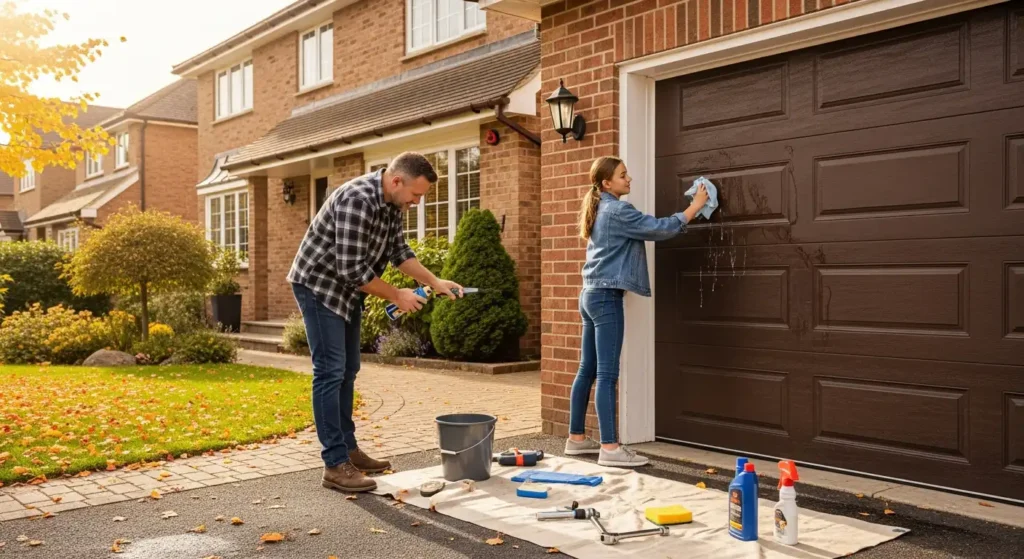
Even with the best intentions, many homeowners make mistakes that shorten the lifespan of their garage doors. Some examples include:
- Over-lubricating parts: Too much oil can attract dust and debris.
- Ignoring small noises: A squeak today can turn into a broken spring tomorrow.
- Forgetting the opener: Maintenance should include the motor, chain, and remote batteries.
- Neglecting safety checks: Not testing auto-reverse features regularly can create serious hazards.
The Homeowner’s Garage Door Maintenance Calendar
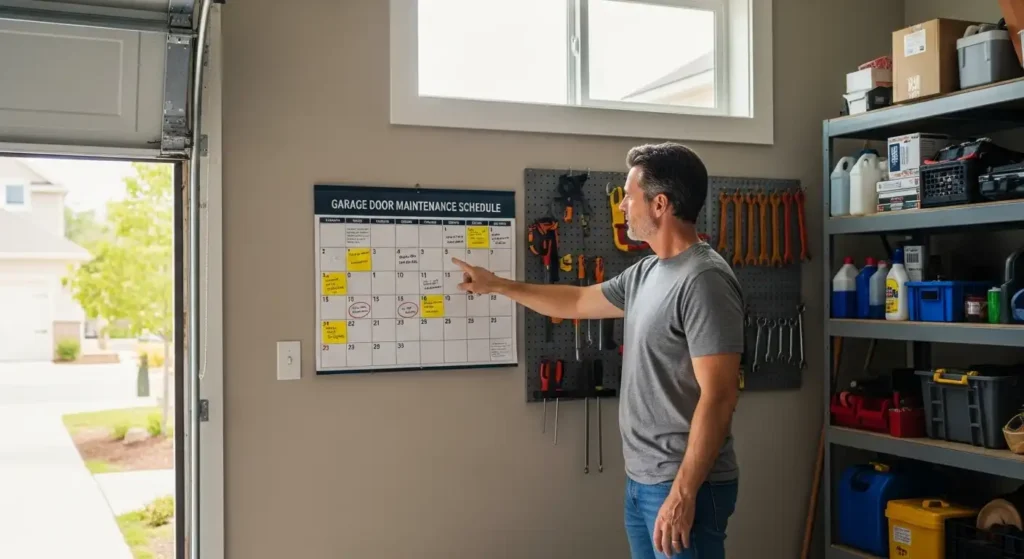
Here’s a quick seasonal calendar to help you stay on track:
- Spring: Clean tracks, check balance, replace weatherstripping.
- Summer: Inspect sensors, repaint or refinish doors, test motor performance.
- Fall: Clear leaves, check insulation, inspect cables and springs.
- Winter: De-ice bottom seals, lubricate rollers, test auto-reverse safety.
Seasonal Maintenance Saves Money
Preventive maintenance not only improves safety but also saves money. Small fixes like replacing weatherstripping or lubricating hinges are far cheaper than replacing cables, motors, or entire doors. Seasonal care helps you avoid costly emergency repairs and extends the lifespan of your investment.
Final Thoughts
Your garage door is one of the largest moving systems in your home, and it deserves year-round attention. By following seasonal garage door maintenance tips, you can keep your door safe, energy-efficient, and reliable for years to come. Whether you’re tackling simple tasks yourself or scheduling professional service, a proactive approach ensures your garage remains a safe and functional part of your home.
